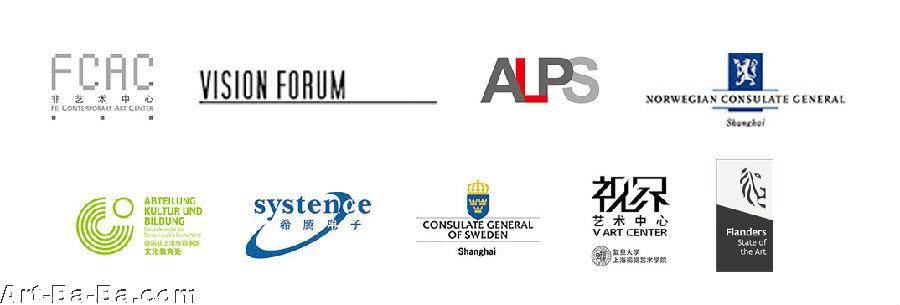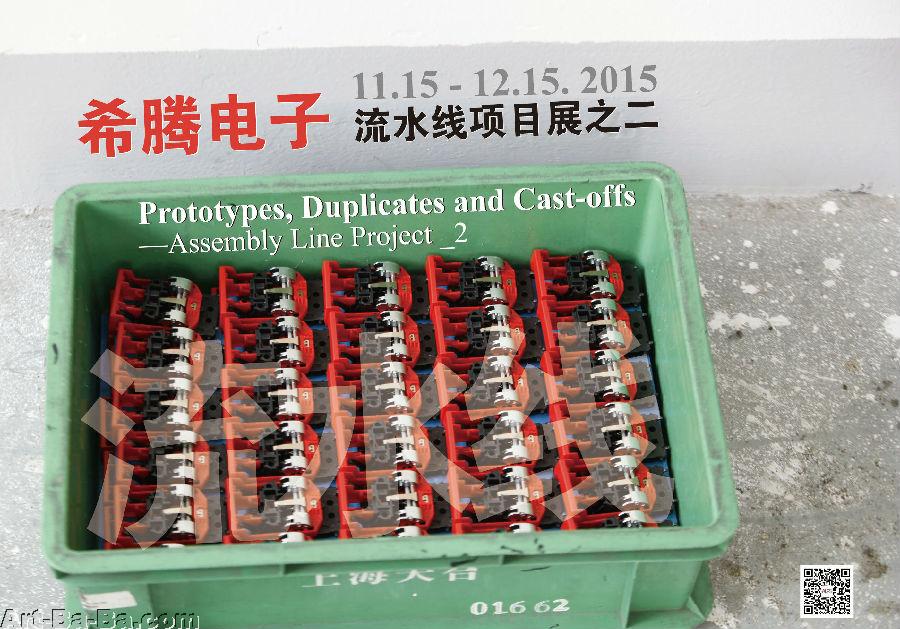
Jiading Venue
Opening:November 15, 2-4pm
Exhibition Dates:Novembe16, December 15, 1-5pm (Closed Sun and Mon)
To Arrange a visit tothe exhibition site please call 132 6267 3118
Address: Bldg 4, No1288 Boxue Lu, Jiading District, Shanghai
M50 Venue
Opening:November 15, 5-7pm
Exhibition Dates:November 16-December 5. 11am-6pm (Closed Mon)
Room 210, Bldg 3, No.50 Moganshan Lu, Putuo, Shanghai
Participating:
Chen Hangfeng (ChineseArtist)
Grass Stage: Wu Meng,Yu Kai, Wu Jiamin, Liu Xing, Bruce Bo Ding and Jia Ying (Chinese theatrecollective)
Per Hüttner (SwedishArtist)
Li Xiaofei (ChineseArtist) + Liu Heping (Chinese Poet)
Liao Wenfeng (ChineseArtist)
Liu Guangyun (ChineseArtist)
Mao Chenyu (ChineseFilm Director/Anthropologist)
Performing Objects: Céline Butaye, Alice De MontBie Michels and Kristof Van Gestel(Belgian Artist Collective)
Egill Sæbjörnsson(Icelandic Artist)
Xiang Liqing (ChineseArtist)
Xiao Kaiyu (ChinesePoet)
Lise Yuen (NorwegianArtist)
Exhibition Organizer:Assembly Line Project Studio (ALPS)
Project ExecutiveDirector: Rebecca Catching
Designer: Guo Qingling
Hosts: Assembly LineProject Studio (ALPS), V-Art Center
Institutional Support:Department for Culture and Education German Consul General Shanghai, NorwegianConsulate General in Shanghai, Consulate General of the Kingdom of Sweden inShanghai, Shanghai Systence Electronics, Fei Contemporary Art Center, VisionForum, Helge Ax:son Johnsons stiftelse.
Special Thanks: JackyYue and Chao Jiaxing
Opening Day Transportation
Bus Departs: 1pm
Address: M50 main gate→ No. 1288 Boxue Lu (travel time 30 minutes)
Bus Departs: 4pm
Boxue Lu No.1288,Jiading → M50 Main gate.
To reserve a spot onthe bus please rsvp by responding to Assembly_Line@yahoo.com by October 30,2015. Seats are limited.
Directions fromShanghai:
Take the HujiaExpressway and get off at Malu.
Turn right onto Bao’anExpressway
Turn left at LuzhongLu
Turn right at FengdengLu
Turn left on Boxue Lu.
Introduction to the Theme
On February 19, 1997,Jacky Yue left the Gobi Desert, leaving behind his job in a giant state-ownedcompany. On that very same day that Deng Xiaoping died, he threw his iron ricebowl in the northwest China desert and headed first to Beijing, then South toShenzhen and finally Shanghai to eke out a living. After an arduous journey heestablished the Systence electronics company in 2000 with two friends—part of agrowing number of small scale-electronics factories which would soon pop up allover the economic landscape in the early 2000s. Over the course of the past tenyears against the background of China’s transformative industrial developmenthe earned himself a modest success. In 2014, after outgrowing their formerfactory space, Systence moved to the Malu Town Industrial Park in Jiading.
In September 2014, theArtist Li Xiaofei moved his studio into the Systence workshop. Li spent thefollowing two months producing the work “Unknown Facets” for the ShanghaiBiennale interacting with the factory workers on a daily basis. Once when theartist was in the workshop eating a quick meal, a worker shyly said to him,“Actually, what you do in your line of work is tiring and laborious!” Thissentence was pregnant with meaning as the artist was surprised to find thiskind of compassion in such an environment. At the same time this questionraises another issue of equality between workers and artists. Can we not justrefer to both of these jobs as “professions”? Perhaps the workers don’t reallyunderstand the work of the artists, but the artist creates value, on the otherhand is it of any greater value than the products we use everyday, which arecreated by the workers?
In the past few years,Li Xiaofei’s Assembly Line Project has gathered source material from differentfactories and workshops; it has used materials produced by factories, andface-to-face interviews with workers. It has gathered footage of the factoryfloors, the production sites and has investigated the workers’ existence—theirliving conditions, their morals, ideologies and overall outlook on life. Aftercompletion, these art works were displayed in designated spaces, such asmuseums and galleries and other kinds of venues.
Yet there seems to bea great distance between the workers and the art works, or perhaps it’s morethat these workers merely serve as the materials from which the artworks aremade. This time with the “Assembly Line Project_2” we will try to return these"materials" used by the artists back to the actual workshop and inthe process we hope to see the workers interact with the artworks. Perhaps theywon’t, but nevertheless we hope to create the conditions necessary tofacilitate a dialogue. Factory, workshop, workers, artists and viewers will,through this specially created environment, form a unique scenario. No matterwhat our profession, in this particular environment the value of our work andcreativity will be evaluated anew.
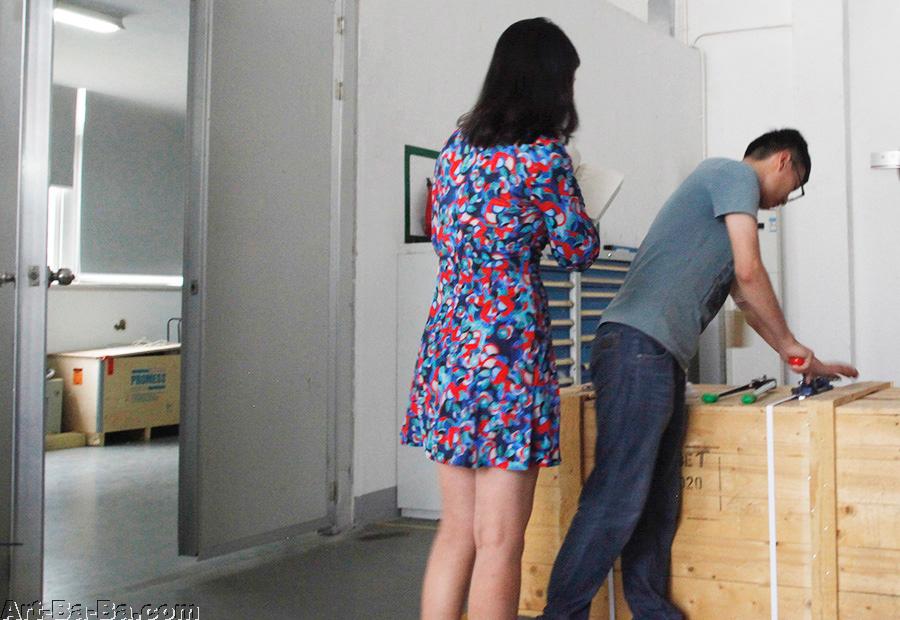
Participants’Profiles
Chen Hangfeng was born and raised in Shanghai and graduated with a BFA from the FineArts College of Shanghai University. His works explore issues ofcommercialization, environmentalism, globalization and cultural transmutation. His work has beenshown at: the Rockbund Museum, Today Art Museum, Palais de Tokyo, the Chinese Arts Center,Casino Luxembourg and the White Rabbit Museum. He has received grants andresidencies from S-Air / Sapporo (Japan), Arts Council England / Visiting Arts,Asia-Europe Foundation and HIAP (Finland).
GrassStage was founded in thespring of 2005, under the direction of Zhao Chuan—writer, curator, and theaterdirector. During that time it has put on a number of programs and performances,which steadily grew in influence and acclaim. The members of Grass Stageencourage ordinary people to enter the theater to create social theater with arich social conscience. Grass Stage’s pieces, operate within the framework ofthe most basic “poor theater”, and employ a diverse set of techniques includingphysical theater, texts, documentary footage, oral story-telling, clownperformance, and performance art, engendering a powerful spaces forintellectual exchange. Over the years, the group has made use of a wide rangeof informal spaces for its performances and discussions. Their theatre has thusbecome gathering places for all kinds of people, continually creating fluidpublic spaces. Grass Stage’s productions have been performed in many cities inChina, as well as in Hong Kong, Macao, Taiwan, Asia, Europe, and the U.S.A.
Wu Mengis an artist, theaterprofessional, freelance writer, and a founding member of Grass Stage. Wu Menghas participated in many works and performances. Her practice has revolvedaround public spaces and social topics.
Yu Kai(Maya)is a theater professional, freelance writer andartist. Maya has been an active participant of the Grass Stage since 2006, andhas participated as a performer and a creator. Of late, her practice hasfocused on forgotten facts—exploring a resistance to forgetting.
Wu Jiamin was born in 1990 inSichuan, where she participated in many campus productions during her time atuniversity before joining Grass Stage in 2011. There she participated in manyproductions as a performer, creator and executive producer.
Liu Nianis a corporate Manger,founding member of Grass Stage and creator of the theatre blog/weibo channel“Theater Collides with the Shooting Stars”.
Bruce BoDingis an art worker, translator, member of the grassstage, and graduated with a BSC from the University of Edinburgh. Since 2014,he has been exploring the idea of making a “connected kind of art”.
Jia Yingis afreelancer; she joined Grass Stage in2014.
LiuGuangyunwas born in Jinan in 1962. He graduated fromCentral Institute of Arts and Crafts (now Academy of Art & Design, TsinghuaUniversity) in 1987 and now works in Shanghai and Mainz, Germany. His work hasbeen exhibited at the “9th Biennale of Havana”, “Videonale 11” (Bonnvideo biennale), Shenzhen and Hong Kong Bi-city Biennale 2013, Madrid NationalMuseum Centro de Arte Reina Sofia, and Palais de Tokyo.
Liao Wenfeng was born in Jiangxi in 1984. In 2006 he graduated fromthe Total Art Studio of the China Academy of Art in Hangzhou. He lived inShanghai from 2006 to 2012 and since then has been living in Berlin. His workshave shown in the 2nd “CAFAM Future” Exhibition in Beijing, “Creating for theFuture” in Germany (2015), “Cosmos” in Shanghai (2014), “17ZWEI-A Public ArtProject” in Switzerland (2013), “Hunters and Hunted“ in Germany (2012). He hasparticipated in international residency programs including the“Artists-in-labs” in Switzerland (2010), and the HIAP residency in Finland(2011).
MaoChenyu lives and works inShanghai, and is the host of Second-Text Lab and the founder of Paddyfilm. In2012, Mao founded the experimental social platform Paddyfilm in Hunan, whichinvestigates and analyses rural societies in China. Five acres of paddy fieldhas been transformed into a self-sufficient farming system, which nurtures thelinguistic and filmic practices of Paddyfilm. In 2015, in opposition to thedrastic transformation of rural societies in China, Mao set up a privateuniversity Elaphurus Davidianus University(EDU) which has carried out social research and education.
Performing Objects experiments with objects and their possibilities to act as aninteractive performer towards its users or audience. The project is processoriented and creates moments of (critical) reflection concerning our embodimentand relation to the objects surrounding us, moments of creation, collectiveexploration during site visits and meetings with invited guests. Besides thisinternal group process the project aims to develop a direct relationship withspecific audiences that will become part of the project.
Bie Michels was born in Kimwenza (Congo) in 1960 and lives and worksin Antwerp, Belgium. She completed a BA in painting in 1990 at the RoyalAcademy of Fine Arts, Antwerp. Her work explores the issues of “anthropologicalart act” and aims to represent reality through an allegory that is no univocalillustration of the anthropological story.
Céline Butaye was born in Mouscron, Belgium, in 1980. She lives andworks in Ghent. She studied Experimental Graphic Design & Painting at LUCAin Ghent, and she has a degree from HISK (Higher Institute of Fine Arts),Ghent.
Alice de Montwas born in 1985 and lives and works in Ghent,Belgium. She graduated from the Higher Institute for Fine Arts (HISK), theÉcole de Recherche Graphique (ERG) and from the Higher Institute Sint-Lukas.Combining sculptures and video with the context of a specific space, De Montcreates situations in which the sculptures develop itself as (like) acharacter. The sculptures often seem to be 'alive' and evolve in a physical andconceptual way.
EgillSæbjörnsson
Egill Sæbjörnsson is avisual artist and musician born 1973 in Reykjavik. He has lived and worked inBerlin since 1999 and since 2007 has been traveling and working in Rio deJaneiro. Sæbjörnsson’s installations, performances and music pieces have been shownat many acclaimed institutions such as The Museum for Contemporary Art at TheHamburger Bahnhof Berlin, Frankfurter Kunstverein, Kölnischer Kunstverein,Baryshnikov Art Center New York, PS1 MoMA, and New York, Kiasma Helsinki.
Per Hüttner was born in 1967, andis a Swedish artist who lives and works in Paris. He was trained atKonsthögskolan, Stockholm and at Hochschule der Künste in Berlin. The artisthas participated in shows at the Hayward Gallery in London, Palais de Tokyo inParis, Moderna Museet in Stockholm, and he has performed at the Tate Britain,the Tate Modern and the Venice Biennial. A dozen monographs on the artist’swork have been published in the last decade. Hüttner is the founder anddirector of the Vision Forum, a project-based international experimentalresearch network.
Lise Kolstad Yuen was born in Lillehammer, graduated from The NationalCollege of Art and Design and now works and lives in Oslo.
Herworks have been exhibited in the “10th Shanghai Biennale 2014—City Pavilion:Urban work & shop” Shanghai, China, “Precariously Yours, Gender, Class andUrbanity in Contemporary Shanghai”, “Change and Exchange 6”, Halle 50,“Matchmaking at Suzhou Creek”, “Talentborse”, Munich, Germany, “Cross Point”,Hennie Onstad Art Center, Oslo, “Taiga” Elverum Museum, Elverum, Norway,“Time”, Krypten Oslo, Norway.
Xiao Kaiyu was born in Zhongjiang County, Sichuan and lived inbetween the city and his hometown until 1992 when he moved to Shanghai. In1997, he moved to Berlin but returned in 2005 to live in Beijing and Shanghai.In 1986, he began to publish his poems and literature and has edited andco-edited “Jiushi Niandai” [The 90s], “Fandui” [Resistance] and “Zhongguo ShigePinglun” [China Poetry Review] and other publications. In 2005 he began to participatein contemporary art exhibitions.
XiangLiqing
Xiang Liqing was born in 1973 in Zhejiang andlives and works in Shanghai. Important exhibitions include "NightTales", ShanghART Gallery, Shanghai (2011), "Shanghai History inMaking from 1979 Till 2009"(2009); "The World of Others—ContemporaryArt Exhibition”, Shanghai Museum of Contemporary Art, Shanghai (2008); “ChinaContemporary, Architecture, Art and Visual Culture”, Museum Boijmans VanBeuningen, Rotterdam, the Netherlands (2006) and “Restless, Photography and NewMedia”, MoCA, Shanghai.
LiuHeping, born in 1950, hecurrently works at Systence Electronics
Li Xiaofeiborn in1973 in Hunan, studied at the Guangzhou Academy of Fine Arts and lives works inShanghai. Li has received grants from the Iaspis International Residency andthe Asian Cultural Council. Li's work has been featured in solo and groupexhibitions internationally, including: “Social Factory: The 10th ShanghaiBiennale”, “{} The 8th Berlin Biennalefor Contemporary Art”,“60th International Short Film Festival Oberhausen”, 5thJapan Nakanojo Biennale and the “2013 Bi-City Biennale ofUrbanism/Architecture”, Shenzhen.
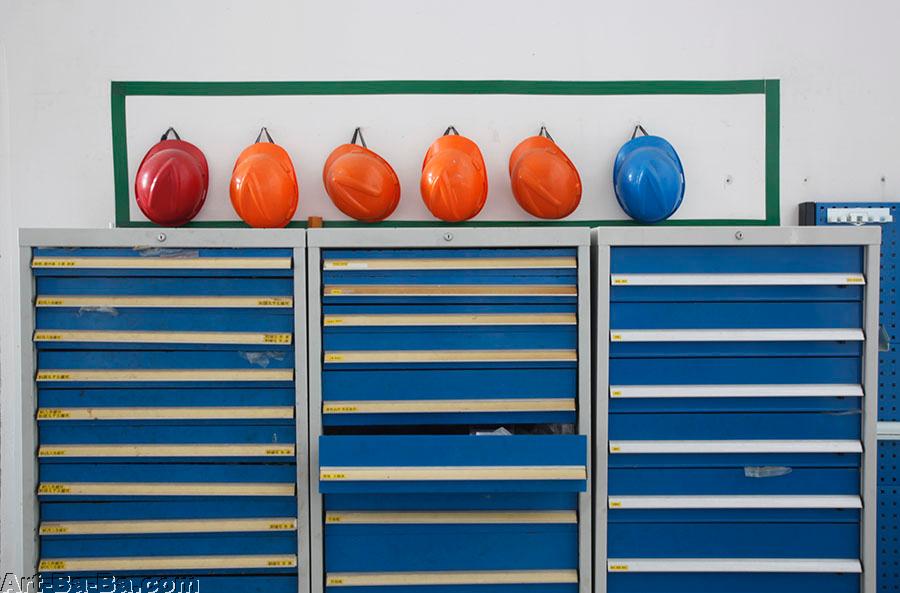
About the Assembly Line Project
The “Assembly Line” isan ongoing series of works, which was initiated in 2010 by Li Xiaofei. It is apractice which is related to the process of social change in not only China buton a global scale.
Currently there aretwo phases to the project. The first phase from 2010-2013 focused on video notonly as a form but also as a tool to analyze the assembly line. During thisperiod, Li worked successively in the Yangtze and Pearl River Deltas, Sweden,Norway, the US and New Zealand to shoot over 100 different kinds of factories,having dialogues and exchanges with people of different positions within theassembly line. He employed a "realtime" shooting technique which wasdifficult to control, mixed with the language of documentary and a fragmentedinterwoven approach to create a mutual restructuring and a transformation ofthe relationship between man and machine, in essence to reconstruct an illusoryreality.
In Li Xiaofei's view,the assembly line is a mode of production driven by capitalistic desire—it isrepetitive, consistent, mechanical and devoid of emotion. At the same time, itis highly efficient, and can expediently expand the volume of production tocreate maximum value. This kind of repetition and consistency not only refersto the machine, but also represents the people in between and finally theproducts themselves.
Since 2013, Li Xiaofeihas been exploring what lies beyond the orderly-ness of the assembly line, thecapitalist factory, consumer society, social progress and social mores—thereality of the people living in a highly systematic and institutionalized environment.In the past two years, he has used various artistic forms employing"everyday objects" as his medium, and a non-narrative method todepict different landscapes and homes, to provoke people from differentangles—from the observation of specific details to the contemplation of thewhole. In the process the viewer can realize that things which may lookunremarkable or natural, often bear with them a profound social significance.
As the Assembly Lineproject progresses, it has morphed into a rich, diverse, complex andfascinating creative project. In 2015 Li Xiaofei established the Assembly LineProject Studio (ALPS), with the aim of making it a creative platform,possessing a flexibility and a certain open-minded approach to engage incommunication with people for different professions, to explore relatedconnections between the Assembly Line and to further extend the Assembly LineProject. At the same time with each phase of discussion and research, we invitedifferent artists and scholars to participate and cooperate with us in anongoing series of curated thematic events.

AssuredStability—Assembly Line Project_1,V ART CENTER, Shanghai, China, 2015
AssuredStability—Assembly Line Project_1
2015.06.01—2015.07.30
Venue: V ART CENTER
Participants: PerHüttner (Artist), Guo QIngling (Artist), Jiang Dandan (Arttheoretician\Philosopher), Lise Yuen (Artist), Li Xiaofei (Artist)
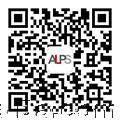
Assembly Line Project Studio (ALPS)
Office: Room 303-A,Bldg.
7A, No. 50 MoganshanLu,
Shanghai, China,200060
Studio: Bldg 4,No.1288
Boxue Lu, JiadingDistrict,
Shanghai, China,201818
Wechat:AssemblyLineProjects
特别感谢以下支持单位
Special Thanks to ourSponsors and Supporters!
